Practice Tracks for ZoomGuitar
Pentatonic Scale Introduction 1
Pentatonic Scale - Example G Major/E Minor
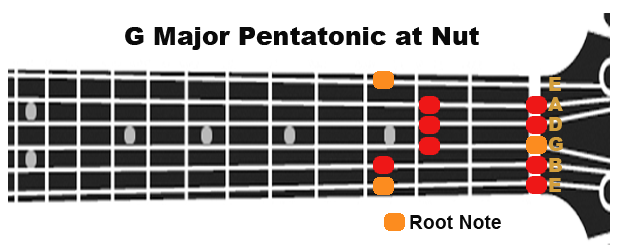
- A Pentatonic Scale is the same as the Major Scale without the 4th and 7th notes ("degrees"). Therefore a Pentatonic Scale has 5 notes instead of the normal 7 (not including the octave root).
- These notes (4th and 7th) are the most likely to conflict with unusual melody and chord arrangements in a song, and that makes the pentatonic more likely to "fit" with almost any of the notes of a song.
- Because of this ability to harmonically "fit" with most melodies and chord sequences, you don't really have to know what notes you are playing when improvising over a tune. This makes it ideal for improvising over melodies and chord sequences.
- The Major Pentatonic Scale contains the same notes as the Minor Pentatonic Scale of the relative minor key. For example, the C Major Pentatonic Scale contains all the same notes as the A Minor Pentatonic Scale.
- The primary difference is that the Root of the scale is different. The Root is both the starting point of the scale and the note that you focus on when playing it. You tend to build the sequence of notes around the root of the scale, and you return to the root both within the improvisation and at its end.

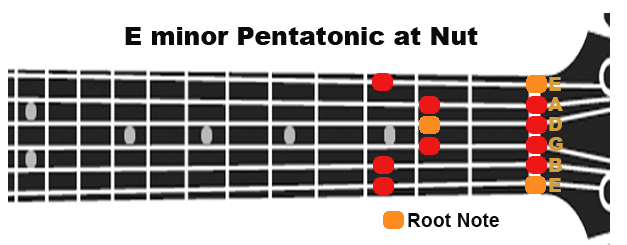
Relationship between Minor and Major
Many players learn the minor pentatonic shape before they learn the major. This is because the minor pentatonic is more compatible with with many classic rock tunes and emphasizes the hard or raunchy character of power chords typically used in so many rock arrangements. Once you master the minor pentatonic scale, the major pentatonic can be played by just moving the exact same shape down three frets. For example here are the A minor and A Major shapes:
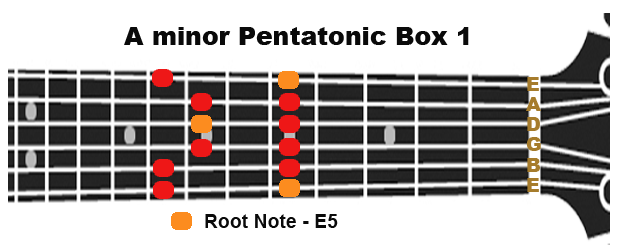
You can experiment with is shape by playing along with this song in Am: House of the Rising Sun - Am
Move the shape three frets towards the nut...
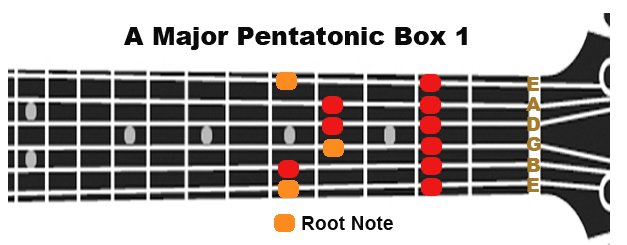
You can experiment with is shape by playing along with this song in A Major: Sign of the Times - A
Finding the Correct Key
You find the key that you're playing in by locating the root of the scale. For the illustrated shapes the root is on the E string. The minor root is at the 1st fret of the box. For the major scale the root is at the 4th fret of the box . For the relative minor of a major scale (for example Em is the relative minor of G Major,) the root of the relative minor is at the 1st fret of the same box. For example, G major root is at E3, and E minor root is at E0 root is just 3 frets down towards the nut. E5 (A) is the root of the A major pentatonic scale (at the 4th fret of the box), and E2 (F#) is the root of the F#m pentatonic scale.
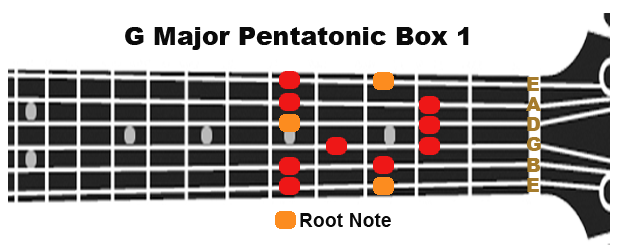
Here is a good example for playing the G Major Pentatonic
Back to Assignments
ZoomGuitar
